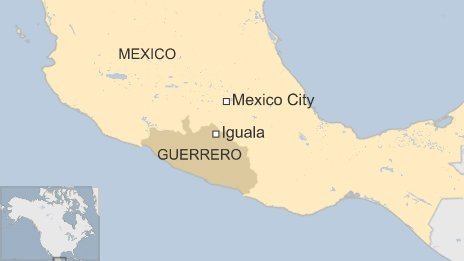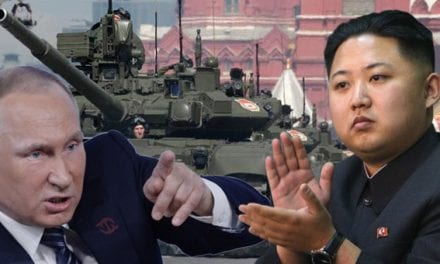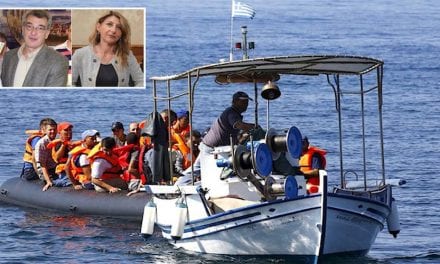Relatives of 43 missing Mexican students have led mass protests in the capital demanding action from the government to find them.
The families from Guerrero State arrived in Mexico City after touring the country.
The students, all trainee teachers, went missing after attending a protest in Iguala, Guerrero State.
Many remain unconvinced by the official explanation that the students were murdered by a drugs gang.
Forensic tests are being carried out on bodies found in mass graves in the state.
The mayor of Iguala Jose Luis Abarca has been arrested facing accusations that he ordered police to confront the students on the day of their disappearance on 26 September.
In the past decade, more than 100,000 people have been killed and 27,000 have disappeared in Mexico in the last decade.nalysis: Wyre Davies, BBC News, Mexico City
Corruption and political violence are endemic in Mexico. In the last decade, 100,000 people have died and 27,000 people have gone missing.
Yet this single incident, the disappearance of 43 students in the southern state of Guerrero, has galvanised all of this opposition here in the centre of Mexico city.
Everyone at this march is indignant. They're angry that the government of Enrique Pena Nieto has failed to get on top of this crisis.
We don't know what happened to the 43 students. We don't even know if they're still alive.
What we do know is that they were abducted almost certainly on the orders of a local politician allied to local gangs in the state of Guerrero.
Many Mexicans have simply had enough, and they want their government to find out what happened.
Scuffles
Thousands of people took part in three protest marches in the capital, which started at 17:00 local time (23:00 GMT).
Many thousands converged on Mexico City's main square, or Zocalo.
Several hundred protesters gathered near the presidential palace, where police tried to push them back using water cannon.
But the protest itself was peaceful with only small groups of protesters throwing bottles and fireworks at the presidential palace.
Francisco Lagro, father of 19-year-old Magdaleno, one of those missing, was travelling on one of the caravans that arrived in the capital on Thursday.
"It's been almost two months without knowing where they are. We don't know anything and we're desperate," he said.
"What are they doing? In what conditions? Do they get any water or food? Are they tied up? We have so many questions."
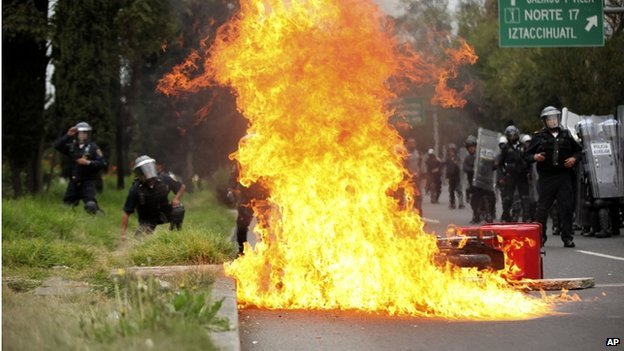 Rocks and Molotov cocktails were hurled at police near the airport
Rocks and Molotov cocktails were hurled at police near the airport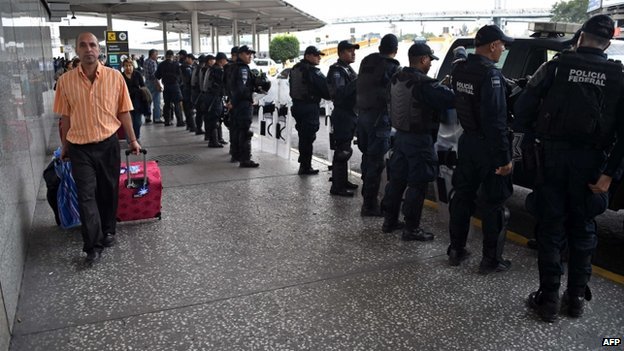 There was a heavy police presence ahead of the march
There was a heavy police presence ahead of the march Bolivian students marched in solidarity with their Mexican counterparts in La Paz
Bolivian students marched in solidarity with their Mexican counterparts in La Paz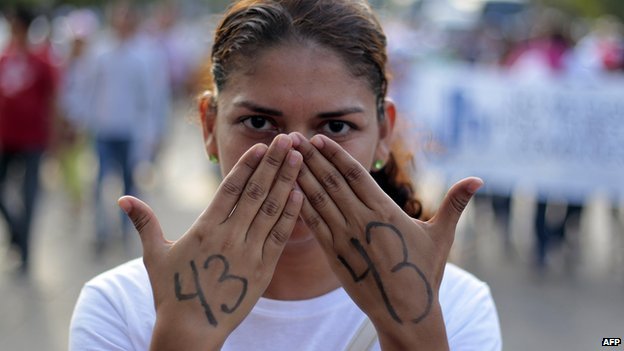 The protests for the missing students reflect wider anger at political corruption
The protests for the missing students reflect wider anger at political corruptionIn violence near Mexico City's international airport before the marches began, some 200 hooded protesters threw rocks and petrol bombs at police officers who had been trying to disperse them.
Demonstrators have also called for a nationwide strike. Protests also took place in other parts of Mexico and abroad.
The abduction has galvanised opposition to rampant political corruption and violence.
Mexican President Enrique Pena Nieto has accused some of the protesters of trying to "destabilise" the state.
Analysts say the issue is the biggest challenge he has faced in his two years of office.
